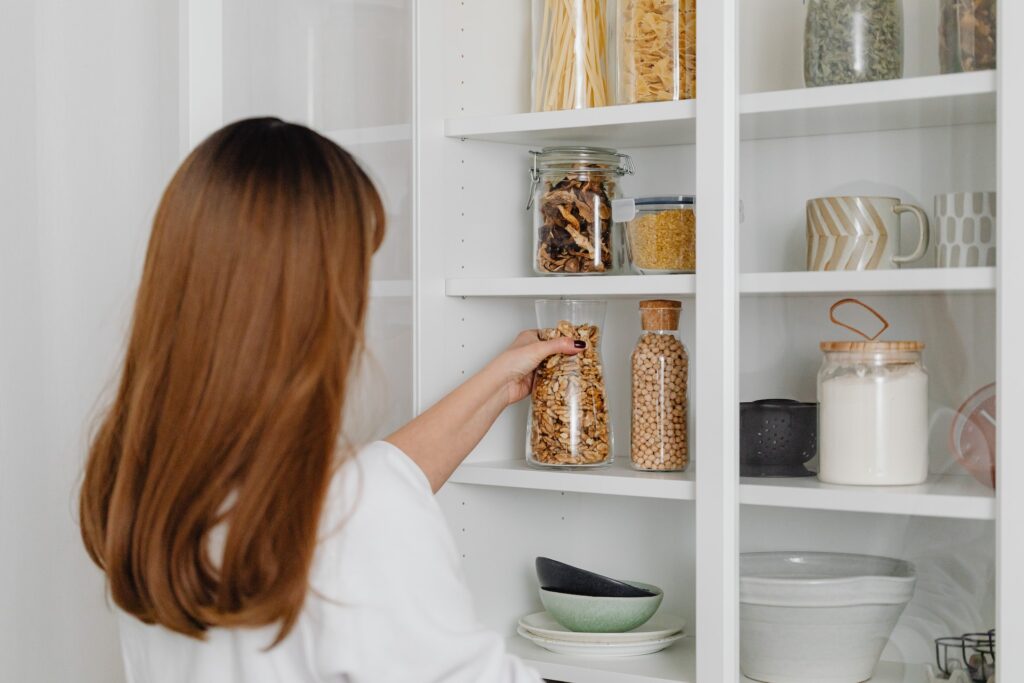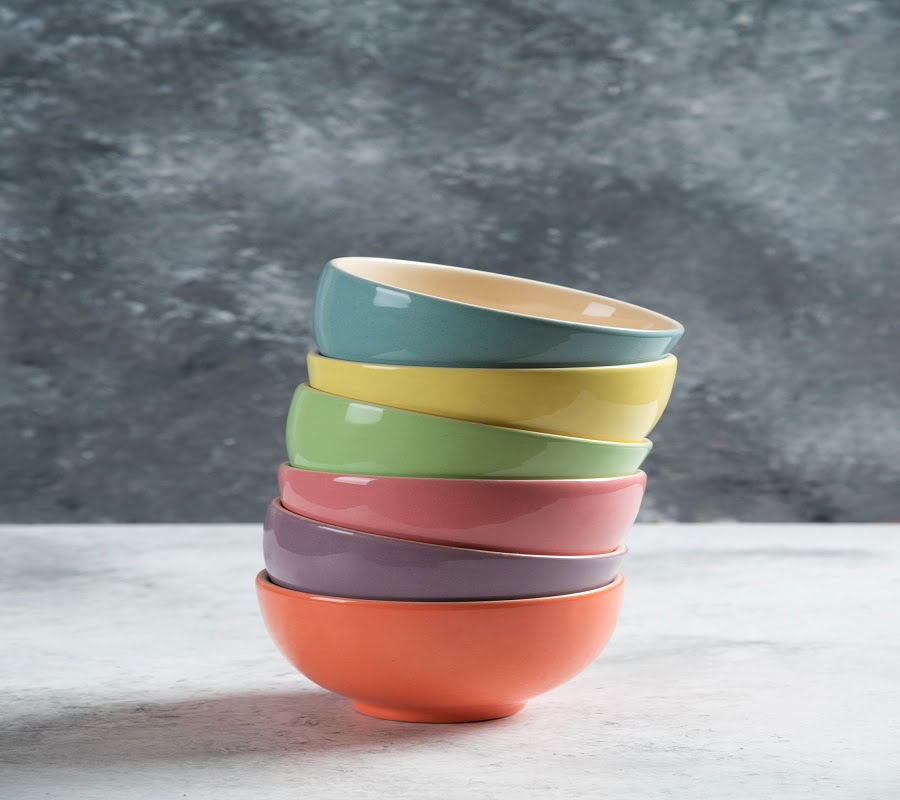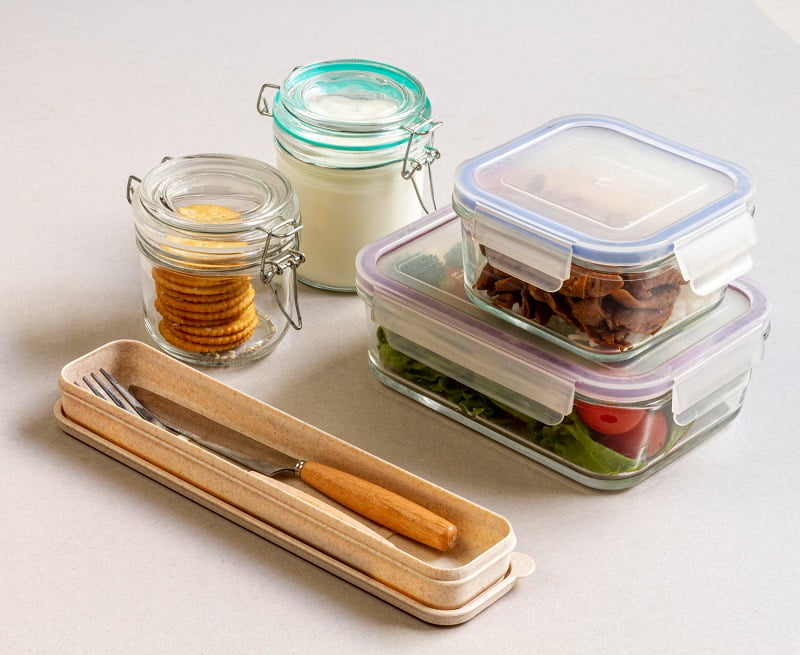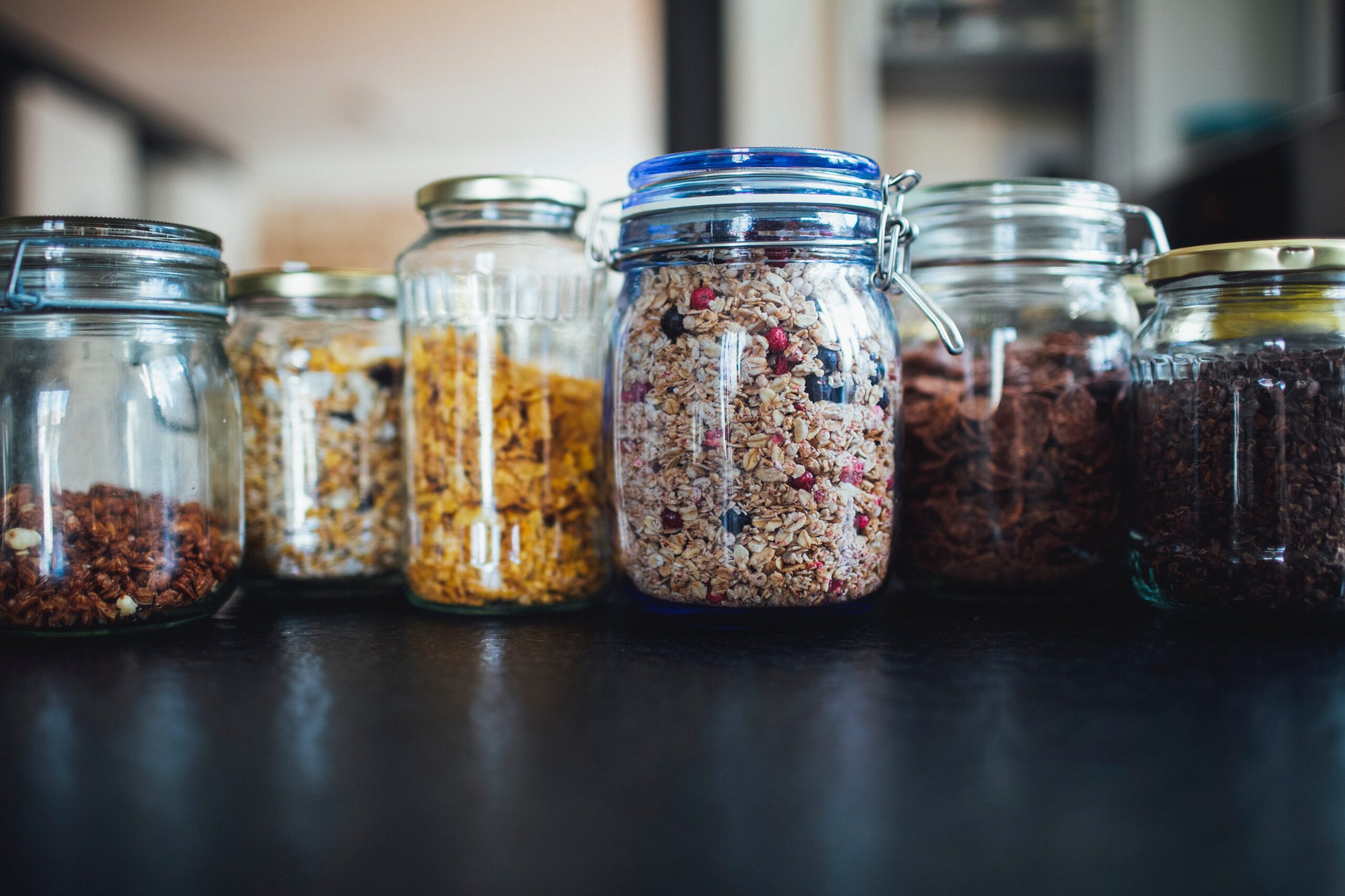Introduction
In today’s health-conscious society, it’s essential to consider not only the quality of the food we consume but also the containers in which we store them. With increasing awareness about the potential risks associated with plastics and other harmful chemicals, the demand for non-toxic food storage containers has grown significantly. In this article, we will explore the importance of using non-toxic food storage containers, the potential dangers of traditional containers, and provide recommendations for safe and sustainable alternatives.
1. Understanding the Need for Non-Toxic Food Storage Containers
Non-toxic food storage containers are essential for several reasons, primarily to safeguard our health and the environment. Traditional food containers made from certain materials can leach harmful chemicals into the food they hold, posing health risks when ingested over time. Understanding the need for non-toxic food storage containers is crucial for promoting overall well-being and sustainability.
- Health Concerns: Some food containers, especially those made from plastics like polycarbonate or polyvinyl chloride (PVC), may contain harmful substances such as bisphenol A (BPA) or phthalates. These chemicals can migrate into the food, especially when the containers are heated or used for acidic or oily foods, and may disrupt hormonal systems and cause various health issues.

2.Environmental Impact: Toxic food containers contribute to environmental pollution. Plastics, in particular, are a major environmental concern due to their slow decomposition rate. They can end up in landfills or oceans, harming wildlife and ecosystems. By using non-toxic food containers, we can reduce the environmental burden and promote more sustainable practices.
3. Protection of Food Quality: Non-toxic food containers help preserve the quality and taste of food. Certain materials can react with acidic or fatty foods, altering the flavor and potentially compromising the nutritional value. Non-toxic containers, such as glass or stainless steel, don’t interact with food, ensuring it remains safe and delicious.
4. Avoiding Harmful Substances: Using Non-Toxic Food Storage Containers reduces the risk of accidentally consuming harmful chemicals. For example, reheating food in plastic containers can cause chemical leaching, leading to the ingestion of toxic compounds that may have adverse effects on health.
5. Longevity and Durability: Non-toxic food storage containers made from durable materials, like glass or stainless steel, tend to last longer than disposable or low-quality plastic containers. This promotes waste reduction and reduces the need for frequent replacements, contributing to a more sustainable lifestyle.
6. Safe for All Ages: Non-toxic food containers are especially important for families with young children, as infants and toddlers are more susceptible to the potential harm caused by toxic substances. By using safer materials, we can ensure the health and well-being of our little ones.

1.1 The impact of chemical leaching on food safety
Chemical leaching can have significant implications for food safety. When food comes into contact with containers or packaging materials that contain harmful chemicals, these substances can migrate into the food, potentially leading to various health risks. The impact of chemical leaching on food safety includes the following concerns:
- Health Hazards: Chemicals such as bisphenol A (BPA), phthalates, and other plasticizers are commonly used in some food packaging materials. When these chemicals leach into food, they can be ingested and may have adverse effects on human health. BPA, for example, is known to be an endocrine disruptor, which means it can interfere with hormonal systems and potentially lead to developmental, reproductive, and other health issues.
- Contamination of Food: Food containers made from certain materials, like some plastics, can release harmful substances when exposed to heat, acidic or fatty foods, or prolonged storage. This contamination can compromise the safety and quality of the food, making it unsafe for consumption.
- Long-term Exposure: Continuous exposure to leached chemicals from food containers can lead to cumulative health effects over time. Infants, young children, pregnant women, and individuals with pre-existing health conditions may be particularly vulnerable to the effects of chemical leaching.
- Allergic Reactions: Chemical leaching can also cause allergic reactions in some individuals. Certain substances that leach into food may trigger allergies or sensitivities, leading to symptoms such as skin rashes, digestive issues, or respiratory problems.
- Migration from Utensils: It’s not just food containers that can pose a risk. Utensils or cookware made from materials containing harmful chemicals may also release these substances into the food during cooking or serving, further adding to the exposure.
- Regulation and Compliance: Many countries have regulations and standards regarding the use of certain chemicals in food contact materials. However, enforcement and compliance can vary, leading to potential risks when using containers from unreliable sources or those without proper certifications.
To ensure food safety and minimize the impact of chemical leaching, it is crucial to opt for non-toxic food storage containers and packaging materials. Materials like glass, stainless steel, or food-grade silicone are considered safer alternatives to plastics. Additionally, using microwave-safe and BPA-free containers can help reduce the risk of chemical migration during reheating.
By being aware of the potential risks associated with chemical leaching and making informed choices about the containers and materials we use for storing and handling food, we can take proactive steps to safeguard our health and well-being.
1.2 Long-term health effects of toxic chemicals in food containers

Chemical leaching can have significant implications for food safety. When food comes into contact with containers or packaging materials that contain harmful chemicals, these substances can migrate into the food, potentially leading to various health risks. The impact of chemical leaching on food safety includes the following concerns:
- Health Hazards: Chemicals such as bisphenol A (BPA), phthalates, and other plasticizers are commonly used in some food packaging materials. When these chemicals leach into food, they can be ingested and may have adverse effects on human health. BPA, for example, is known to be an endocrine disruptor, which means it can interfere with hormonal systems and potentially lead to developmental, reproductive, and other health issues.
- Contamination of Food: Food containers made from certain materials, like some plastics, can release harmful substances when exposed to heat, acidic or fatty foods, or prolonged storage. This contamination can compromise the safety and quality of the food, making it unsafe for consumption.
- Long-term Exposure: Continuous exposure to leached chemicals from food containers can lead to cumulative health effects over time. Infants, young children, pregnant women, and individuals with pre-existing health conditions may be particularly vulnerable to the effects of chemical leaching.
- Allergic Reactions: Chemical leaching can also cause allergic reactions in some individuals. Certain substances that leach into food may trigger allergies or sensitivities, leading to symptoms such as skin rashes, digestive issues, or respiratory problems.
- Migration from Utensils: It’s not just food containers that can pose a risk. Utensils or cookware made from materials containing harmful chemicals may also release these substances into the food during cooking or serving, further adding to the exposure.
- Regulation and Compliance: Many countries have regulations and standards regarding the use of certain chemicals in food contact materials. However, enforcement and compliance can vary, leading to potential risks when using containers from unreliable sources or those without proper certifications.
To ensure food safety and minimize the impact of chemical leaching, it is crucial to opt for Non-Toxic Food Storage Containers and packaging materials. Materials like glass, stainless steel, or food-grade silicone are considered safer alternatives to plastics. Additionally, using microwave-safe and BPA-free containers can help reduce the risk of chemical migration during reheating.
By being aware of the potential risks associated with chemical leaching and making informed choices about the containers and materials we use for storing and handling food, we can take proactive steps to safeguard our health and well-being.
1.3 Growing concerns about environmental sustainability

Growing concerns about environmental sustainability have become a global focus as societies recognize the urgent need to address the impact of human activities on the environment.
- Climate Change: One of the most pressing concerns is climate change, which is primarily driven by greenhouse gas emissions from burning fossil fuels, deforestation, and industrial processes. Rising global temperatures lead to extreme weather events, sea-level rise, disruptions in ecosystems, and threats to human livelihoods.
- Biodiversity Loss: The loss of biodiversity is a critical issue as human activities, such as habitat destruction, pollution, and over exploitation, lead to the extinction of numerous plant and animal species. The decline in biodiversity affects ecosystem health, food security, and human well-being.
- Pollution: Environmental sustainability is threatened by various types of pollution, including air pollution from industrial emissions and transportation, water pollution from chemicals and waste, and soil contamination. Pollution harms ecosystems, wildlife, and human health.
- Resource Depletion: Unsustainable consumption patterns and over exploitation of natural resources, such as freshwater, forests, and minerals, lead to resource depletion and jeopardize the ability of future generations to meet their needs.
- Deforestation: Large-scale deforestation for agriculture, logging, and urbanization contributes to carbon emissions, reduces biodiversity, and disrupts the earth’s natural carbon sequestration processes.
- Plastic Waste: The massive accumulation of plastic waste in oceans and landfills poses a serious threat to marine life and ecosystems. Microplastic particles also enter the food chain, impacting human health.
- Water Scarcity: With increasing demands for water from agriculture, industry, and growing populations, many regions face water scarcity, exacerbating environmental challenges and affecting human communities.
- Sustainable Development: The need for balancing economic growth with environmental protection and social equity has gained prominence. Sustainable development aims to meet present needs while ensuring the well-being of future generations.
- Renewable Energy Transition: Transitioning from fossil fuels to renewable energy sources, such as solar, wind, and hydroelectric power, is vital for reducing greenhouse gas emissions and combatting climate change.
- Circular Economy: Adopting a circular economy model, where products and materials are reused, repaired, or recycled, helps minimize waste generation and conserve resources.

To address these concerns, individuals, governments, businesses, and organizations are increasingly taking steps toward sustainable practices. This includes promoting renewable energy, implementing conservation measures, reducing waste generation, adopting eco-friendly technologies, supporting sustainable agriculture, and raising awareness about environmental issues.
Collaborative efforts on a global scale are essential to ensure a sustainable future for the planet and its inhabitants. By prioritizing environmental sustainability, we can work towards safeguarding the Earth’s natural resources and ecosystems for generations to come.
2. Dangers of Traditional Food Storage Containers
2.1 Plastic containers and their potential health risks
2.2 Harmful effects of BPA (bisphenol A) and phthalates
2.3 The danger of microplastics and nanoplastics in food
3. Safe and Sustainable Alternatives
3.1 Glass containers: durable, non-toxic, and recyclable
3.2 Stainless steel containers: a versatile and eco-friendly choice
3.3 Silicone containers: a flexible, non-toxic option for various purposes
3.4 ceramic containers:

Ceramic containers are an elegant and practical solution for storing food while maintaining its freshness and flavor. Crafted from natural clay materials, these containers offer a non-toxic and environmentally friendly option for your kitchen. The ceramic material helps to regulate temperature and moisture, creating an ideal environment for keeping a variety of foods.
3.5 EcoCare Storage Jars

3,6. HealthGuard Lunch Boxes
3.7 NatureSeal Fresh Containers
3.8 GreenWave Food Savers
3.9 BioSafe Meal Storage
3.10 SafeLock Food Keepers
4. How to Choose Non-Toxic Food Storage Containers
4.1 Look for labels and certifications indicating safety
4.2 Avoid containers with BPA, phthalates, PVC, and other harmful chemicals
4.3 Consider the durability and lifespan of the containers
5. Benefits of Non-Toxic Food Storage Containers
5.1 Improved food freshness and flavor
5.2 Enhanced food safety and reduced health risks
5.3 Positive environmental impact and reduced waste
6. Proper Care and Maintenance of Non-Toxic Food Storage Containers
6.1 Avoiding microwave and dishwasher use for certain containers
6.2 Cleaning instructions for different types of containers
6.3 Ensuring proper storage conditions to prolong container lifespan
7. Recognizing Green washing: How to Identify Genuine Non-Toxic Food Storage Containers
7.1 Understanding misleading marketing claims
7.2 Researching and verifying product claims
7.3 Identifying eco-friendly and non-toxic materials
8. Incorporating Non-Toxic Food Storage Containers into Everyday Life

8.1 Tips for transitioning from traditional to Non-Toxic Food Storage Containers.
8.2 Storing various types of food in non-toxic containers
8.3 Creative ways to repurpose and reuse containers
9. Conclusion
In conclusion, the shift towards Non-Toxic Food Storage Containers is crucial for our health and the environment. By understanding the dangers associated with traditional containers and exploring safe alternatives, we can make informed choices to protect ourselves, our families, and the planet. Embracing non-toxic containers not only ensures the safety of our food but also contributes to a sustainable future.
Unique FAQs After the Conclusion / Non-Toxic Food Storage Containers
Q1: What makes a food storage container non-toxic? A: Non-Toxic Food Storage Containers are made from materials that do not release harmful chemicals or toxins into your food. They are typically free from substances like BPA, phthalates, and lead, ensuring the safety of your food and your health.
Q2: Are all plastic-free containers considered non-toxic? A: While plastic-free containers are a step towards reducing toxins, it’s essential to ensure that they are made from non-toxic materials such as glass, stainless steel, or silicone. Some plastic alternatives might still contain chemicals of concern, so always check the material composition.
Q3: Can non-toxic containers handle both hot and cold foods? A: Yes, many non-toxic containers are designed to handle a wide range of temperatures, making them suitable for both hot and cold foods. Look for containers that are labeled as microwave-safe and freezer-safe.
Q4: How can I tell if a container is truly non-toxic? A: Look for Non-Toxic Food Storage Containers that are labeled as “BPA-free,” “phthalate-free,” and “lead-free.” Additionally, certifications from recognized organizations such as the FDA (Food and Drug Administration) or third-party testing agencies can provide assurance of their non-toxic nature.
Q5: Are there Non-Toxic Food Storage Containers options for food storage on-the-go? A: Absolutely! Many brands offer Non-Toxic Food Storage Containers solutions designed for portability, such as stainless steel or silicone collapsible containers. These are perfect for packing lunches or snacks while minimizing exposure to toxins.
Q6: Can non-toxic containers help reduce food waste? A: Yes, non-toxic containers with airtight seals can help extend the shelf life of food, reducing the likelihood of spoilage. This can ultimately contribute to reducing food waste.
Q7: Are non-toxic containers more sustainable than traditional options? A: Yes, many Non-Toxic Food Storage Containers are made from eco-friendly and sustainable materials. For instance, glass and stainless steel containers are durable and can be reused for years, reducing the need for disposable plastic containers.
Q8: Can Non-Toxic Food Storage Containers be used in the dishwasher? A: Generally, yes. Most non-toxic containers are dishwasher-safe, but it’s always a good idea to check the manufacturer’s recommendations to ensure the longevity of the container.
Q9: Do Non-Toxic Food Storage Containers have any benefits for the environment? A: Absolutely. By opting Non-Toxic Food Storage Containers, you are reducing the demand for plastic production, which in turn helps minimize plastic pollution and its negative impact on the environment.
Q10: Can Non-Toxic Food Storage Containers be used for long-term food storage? A: Yes, Non-Toxic Food Storage Containers are suitable for long-term food storage. Materials like glass and stainless steel are excellent choices for preserving food over extended periods while maintaining its freshness and safety.
You May Like : What is Video Interaction Guidance (VIG) and How can life easier for your kids ?
